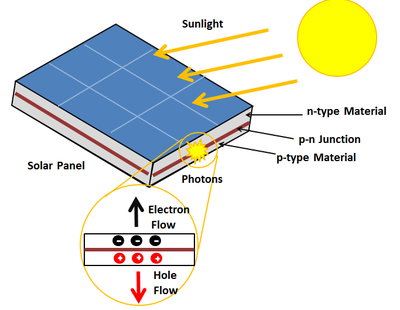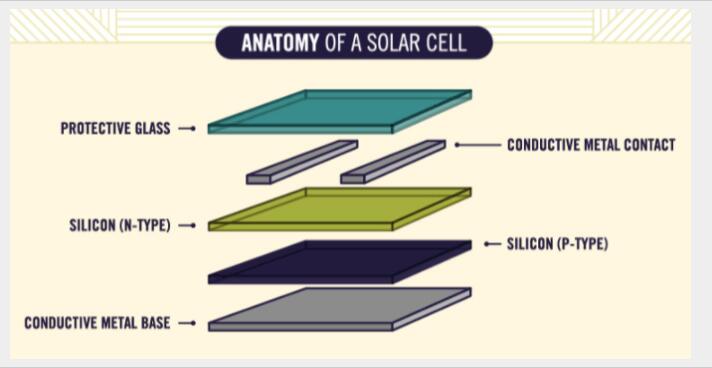The working principle of the
solar module is to allow photons (light particles) from sunlight to knock out electrons from atoms. Silicon itself cannot carry current, which is why the silicon found in solar particles is impure and combined with phosphorus. When combined with phosphorus, electrons can freely delocalize to carry charges. This process of adding impurities is called doping.

The result is the so-called N-type silicon and its discovery on the surface of
PV solar panels. Under the N-type silicon layer, the opposite side of its mirror is: P-type silicon. The P-type uses impurities from elements such as gallium or boron, which means that the material has room for other electrons. This creates an electromagnetic field where the upper N-type silicon layer is negative and the P-type silicon is positive. The electrons escape from the atoms in the N-type layer and move toward the p-type layer to fill the empty electron space. The flow of electrons produces electricity.

What are the components of mono solar panel?
Solar panels are made of silicon layers. Silicon forms a hard and fragile crystal structure and is the second most abundant element on the earth. This semiconductor material can be grown, and scientists grow silicon in a tube as a single, uniform crystal. Then they unrolled the tube and cut the sheet into "wafers" to make them as thin as possible. The efficiency of most solar panels is between 10% and 20%. Ten years ago, the efficiency level of solar panels was about 13%. In 2019, it has risen to 20%. Due to the nature of silicon, the upper limit of silicon is 29%.
For future solar cells to replace existing solar cells, they must be able to capture more light, convert light into energy more efficiently, and be cheaper than existing designs.
The first option for improving solar cells is to add hardware so that they can capture more light, which means we don’t need to abandon the current solar cell design. Electronic equipment can be installed in the solar cell so that the solar cell can track the sun when it moves in the sky during the day. If the solar cell is always pointed at the sun, it will allow more light to shine on the solar cell, which can generate more electricity. The current design of electronic devices that can perform this function is an ongoing challenge, but innovations in this area continue. Or, instead of moving the solar cells, we can install mirrors to focus the light on smaller, cheaper solar cells.
Another way to improve the performance of solar cells is to determine their efficiency. Solar cells with more than one layer of light capturing material can capture more light. Recently, a four-layer solar cell tested in the laboratory can capture light with an efficiency of 46%. These cells are still too expensive and difficult to produce for commercial use, but ongoing research may make these ultra-efficient cells the new standard.
The alternative to increasing efficiency is simply to reduce costs. Although it has become cheaper for decades, it still contributes greatly to the cost of solar cell installation. By using thinner solar cells, material costs are reduced. Researchers have created an ultra-thin flexible solar cell with a thickness of 1.3 microns-about 1/100 the width of a human hair and 30 times wider than office paper. It can be placed on soap bubbles and is as efficient as ordinary glass. Solar cell. Like batteries with multiple layers, thin-film solar cells are a bit tricky to manufacture, which limits their applications, but research is ongoing.
In the near future, the cost of silicon solar cells may continue to fall, which will make it more accessible to more people in the future, especially in developing countries. In the United States, cost reductions are expected to increase solar power generation by 500% by 2050. In theory, as we know, to power the world, we need 4,000,000 square meters of solar cells. From this perspective, the Sahara Desert covers an area of 3,600,000 square meters.
Solar energy has great potential, and most countries that are still short of electricity are hot and sunny countries. For these countries, adapting to solar energy will be more effective, safer and cleaner than kerosene. However, due to the lack of continuous sunlight during the day, we are unlikely to see European countries completely dependent on solar energy.

